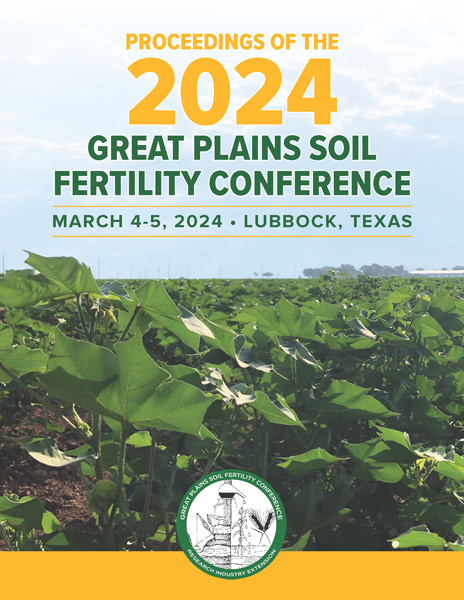Conference Proceedings Available!
Proceedings
Authors
| Filter results4 paper(s) found. |
|---|
1. Soil Quality and Nitrogen Availability After Eight Years of a Mixed Cover Crop - Wheat RotationDespite a large interest in cover crops in the northern Great Plains, little is known about their effect on both the following wheat crop and soil quality. In 2012, a cover crop study was started in Montana to compare wheat production and soil quality after growing cover crop mixes containing 2-, 6-, or 8-species, with both summer fallow and a sole pea cover crop control, in a 2-yr rotation with wheat. The 2-species mixes represented functional groups (legumes, brassicas, tap rooted, or fibrous... C. Jones, P. Miller, C. Zabinski, K. D'agati |
2. Impact of Post-feekes 6 Nitrogen Application in Winter Wheat Forage ProductionProducers have options when choosing how to utilize their wheat acreage in Oklahoma. These include, grain harvest only, dual-purpose grazing and grain, and graze-out where the wheat crop is used solely for grazing cattle. Many producers take advantage of graze out wheat as a forage for cattle during the winter season. With acreages of approximately 400,000 acres of winter wheat grown for graze out production in the state of Oklahoma in 2018, many questions regarding management of wheat for grazing... B. Finch, V. Reed, J. Rogers, J. bigatao souza, B. Arnall |
3. Legacy Impacts of Cattle Grazing on Soil N2O and CH4 Fluxes in Shortgrass SteppeGrazing cattle directly emit CH4 from enteric fermentation and contribute to soil N gas emissions related to nitrogen and organic matter additions from urine and manure deposits. Grazed soils can be sources or sinks of CH4, depending on moisture levels and localized manure patches. N2O emissions are related to availability of water as well as mineral N and labile C substrates in soil. Previously, we observed higher N2O and NH3 losses from fresh patches of urine and manure compared to... S. Del grosso, J. Derner, J. Delgado |
4. Soil Physical Quality Effects of Novel Perennial Grain Cropping at Two Contrasting Sites in Alberta, CanadaNovel perennial grain crops have been proposed as a solution to several environmental issues facing modern agriculture, namely the loss of soil quality often associated with annual monocrops. Abundant literature has stressed the importance of good soil quality for maintaining and improving ecosystem services provided by agricultural systems including, but not limited to, soil carbon sequestration, disease suppression and water filtration. Conversion of annual croplands to perennial systems has... E. Daly, K. Kim , G. Hernandez-ramirez, K. Klimchuk |
